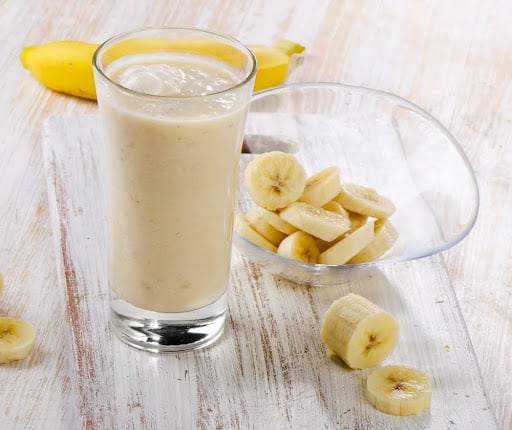Hey Heart & Soil Tribe,
If there ever was a food group worthy of an entire newsletter, it’s raw milk…
Because when something is as wrongly accused, banned and prohibited as this delicious superfood, you just KNOW it’s gotta be good, right?
Raw vs pasteurized milk
There’s an enormous difference between the pasteurized milk you buy in the store and the fresh milk your great-great-grandparents enjoyed.
Their milk was raw and unpasteurized, and in our opinion, one of the very few things on this planet truly worthy of being called a “superfood.”
Raw milk is loaded with friendly bacteria, living enzymes, immunoglobulins, peptides, bioavailable vitamins, and minerals.
This means it’s incredibly nutritious, and comes with natural healing properties, including strengthening the immune system and benefiting allergic conditions.
For example, in this study children who drank raw milk had lower rates of both asthma and hay fever. And the earlier in life they started drinking the raw milk, the more effective the protection was.
But pasteurization damages or destroys many of the nutrients found in raw milk…
And the result is milk that is stripped of its natural healing properties. It’s digestibility is compromised. It is dead milk.
So we’ll say it again… fresh, raw milk and conventional pasteurized milk are not the same…
Raw milk is more delicious AND nutritious!
The decline of milk as we knew it
Now until relatively recently, there was no such thing as “raw” milk.
Raw milk was just normal milk that people had been consuming for thousands of years.
Even just 100 years ago, most American family farms kept at least one dairy cow…
She nourished the family with not only milk, but butter, cream and cheese…
Maybe even ice cream! 🍨

So what happened? How did raw milk come to be replaced by its pasteurized cousin?
Well it started about 150 years ago during the Industrial Revolution.
As people flocked to cities like New York, Boston and Philadelphia, it became impractical to supply them with fresh milk from rural farms.
Dairy cows need lots of pasture, and refrigeration and rapid transport were still in their infancy, so dairy cows were brought into warehouses in the outskirts of cities to supply milk to the population.
They were kept out of the sun and off pastures and fed a poor diet, mostly byproduct grains from city breweries and distilleries.
Unsurprisingly, the cows became sick, and the quality of their milk declined too.
Add in the poor sanitation and refrigeration, and the result was a ton of health problems, which created a scandal around the milk industry.
Raw milk, which had been safely drank for thousands of years, was quickly seen to be a dirty and dangerous food.
Pasteurization was seen as the solution.
But while it enabled dirty milk to be commercialized, it didn’t enable clean milk to be produced from healthy cows.
Over time, pasteurization gained traction and became the standard for ensuring “safe” milk, even though pasteurization changes the very fundamental nature of this superfood.
🥛 Raw milk: your take-home message
Firstly, raw milk is more delicious and more nutritious!
Secondly, where our food comes from, and the health of the animals providing it matters enormously.
Which is why yes, we advocate for raw milk, but only from high-quality sources.
🔍 Where can I find raw milk?
Your first step should be to meet local farmers in your area. We suggest checking out your nearby farmer’s market. Go strike up a conversation with them and don’t be afraid to ask questions!
Special shoutout to our favorite farmer’s market here in Austin, TX! 🙌
Another great resource is The Raw Milk Finder which has listings in almost all States.
🤔 But what if I’m intolerant to dairy?
If you think you might be intolerant to dairy but want to be sure, then it’s worth seeing how you tolerate raw milk vs pasteurized.
Because the amazing thing about raw milk is that many people who are lactose intolerant can tolerate it with no problems.
There are also two varieties of milk out there, A1 and A2. A1 milk is the most common, whereas A2 milk is only found in a small percentage of cows and other ruminants like buffalo, goats, and sheep…
Generally speaking, the less common A2 milk is easier to digest and less problematic than the more common A1 milk.
So if you are intolerant to dairy, consider giving grass-fed, A2, raw milk a try!
We suggest experimenting to see what makes you feel best.
Consider eliminating all dairy for at least two weeks and then reintroducing raw A2 dairy in small amounts.
Monitor how you feel. If you can tolerate it, amazing! If not, then it’s probably best to omit it from your diet.
And remember… whatever you do, avoid oat milk 😂
Your mission for the weekend is to make this incredible animal-based milkshake:

1 cup of raw milk
1 banana
1 tbsp of honey
1 scoop Animal-Based Protein
Put all ingredients in a blender, whisk it up and it’s done!
Delicious! Give it a try 😊
The Heart & Soil Team
This week on Instagram:


This week on Radical Health Radio:

How to Move Naturally & Pain-Free (Primal Movement) ft. Bam Lionheart | Ep. 105
This week in customer reviews: Animal-Based Protein
Subscribe to future articles like this:

